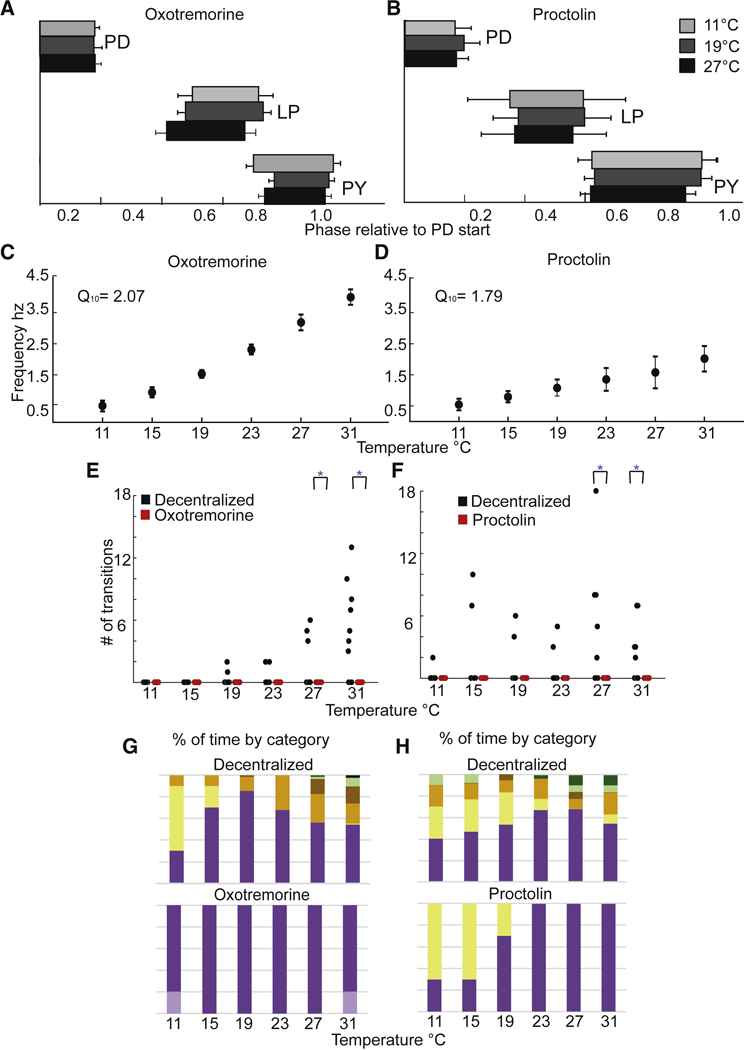Figure 5.

The effects of proctolin and oxotremorine on STG motor patterns as a function of temperature. A B. The average phase relationships (means with S.D.) of the neurons that generate the triphasic rhythm for three temperatures, 11°C (light grey), 19°C (dark grey) and 27°C (black) in 10−5 M oxotremorine (A) (N=10) and in 10−6 M proctolin (B) (N=10). C.D. The mean (with S.D.) frequency of the rhythm calculated from the activity of the PD neurons, across temperature in 10−5 M oxotremorine (C) (N=10) and in 10−6 M proctolin (N=10) (D). E.F. The number of transitions/preparation in the decentralized condition (black circles) and in the presence of 10−5 M oxotremorine and 10−6 M proctolin (red circles) at each temperature (N=10 for each). Decentralized and oxotremorine and proctolin conditions are significantly different at 27°C and 31°s (*p<0.01; paired t-test). G. Each bar represents the cumulative sums of the conditions for all preparations as a function of temperature where the top bar graph is the sum of the decentralized condition and the lower bar graph is the sum of activity patterns in the oxotremorine condition. This shows that more types of activity patterns appear as the temperature is increased in the decentralized condition and more of the less stable activity patterns are present. In oxotremorine all preparations maintain stable activity in one of 2 robust states. H. As (G) for proctolin.
